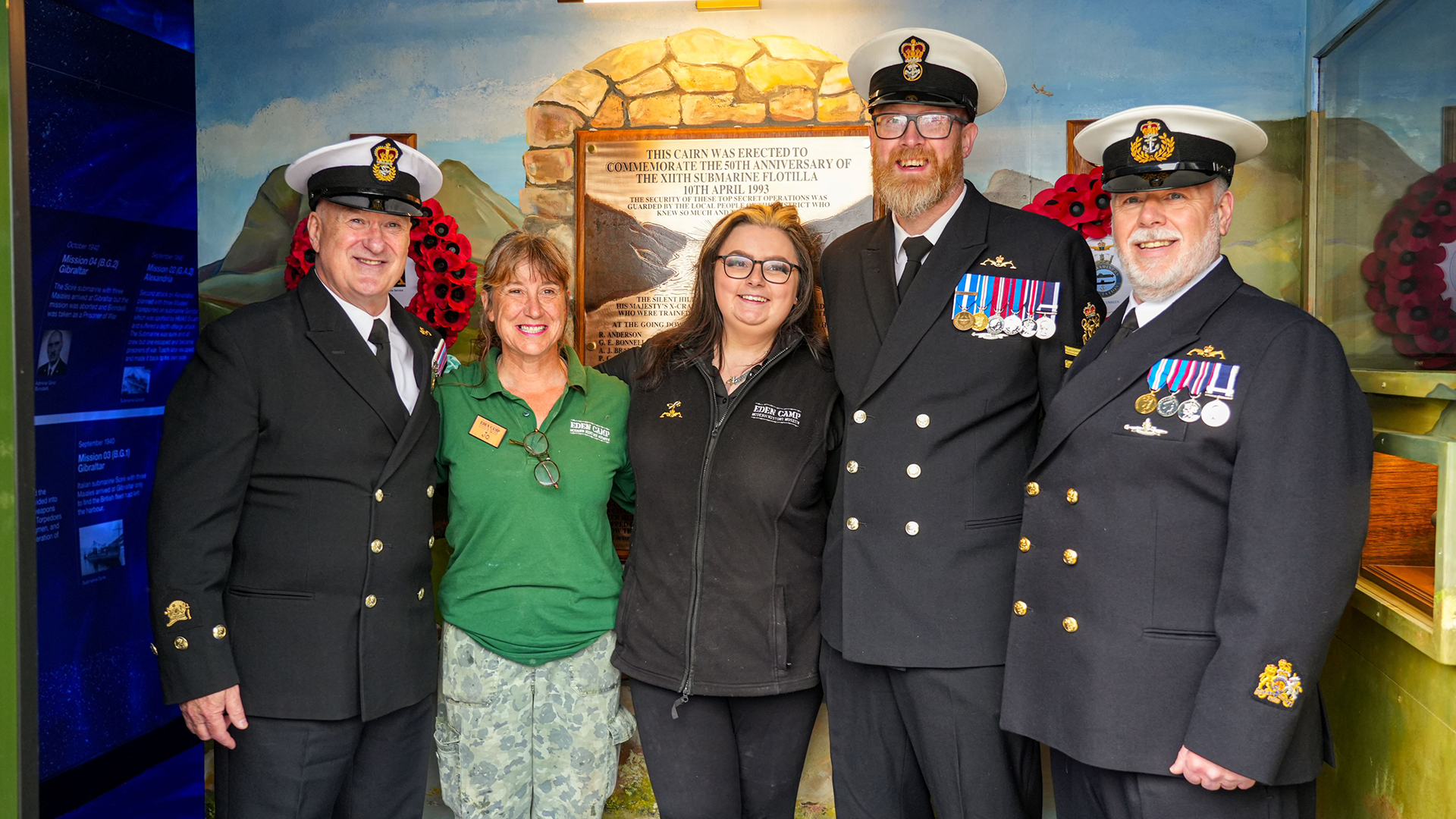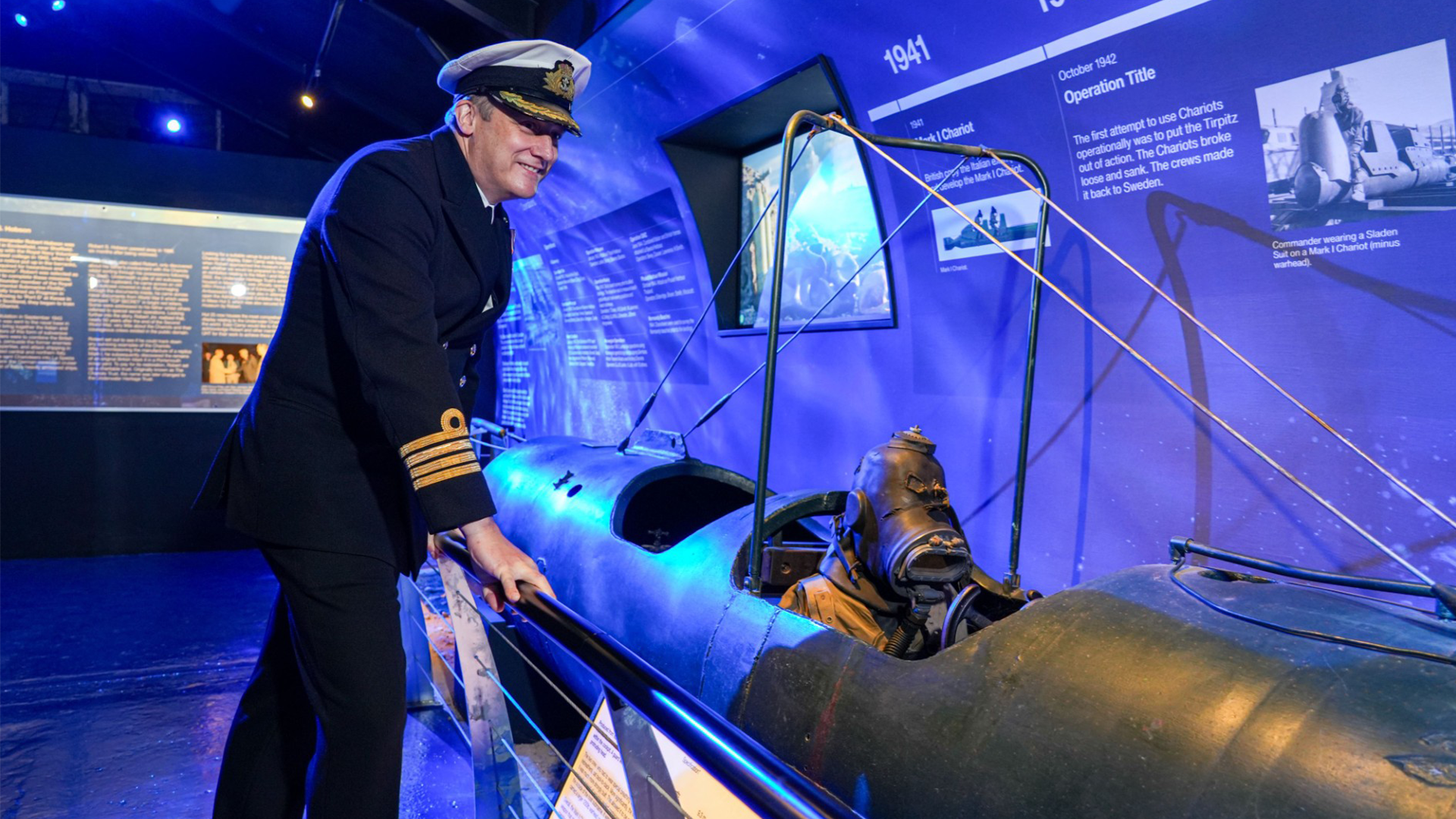
Salvaged plaque honouring top-secret WW2 human torpedo mission finds new home

A plaque honouring WW2 personnel who took part in Operation Source, a covert assault on German warships using experimental X-Craft submarines and human torpedoes, has found a new home.
Once affixed to a cairn in the Scottish Highlands, Submarine Qualification Instructor PO Paul Hogg managed to salvage it and passed it to Chief David O'Neill, described as SMQ's "very own fix-it man", who restored the damaged memorial.
The restored plaque has now been donated to Eden Camp Museum in North Yorkshire, where it completes a new exhibition dedicated to these daring underwater operations, which were often dubbed suicide missions.
A ceremony to unveil the plaque was attended by Navy personnel, veterans and families of those deployed, with a short service and wreath-laying to honour those lost.
WO1 Mark Harris said the event helped connect past, present and future submariners.
"This is a great opportunity for SMQ to bring together past, present and future submariners, along with families of those deployed, to remember the bravery of those who came before us," he said.

In 1943, concerned by the threat of German capital ships stationed in Norwegian fjords, Prime Minister Winston Churchill backed a bold plan - send miniature submarines to strike at anchor.
Operation Source was born out of this ambition, devised by Churchill, Commander Cromwell-Varley and Flag Officer Submarines, Admiral Max Horton.
The attacks were launched in September 1943 and continued for several months.
The 12th Submarine Flotilla was based at Port Bannatyne on the Isle of Bute, with a shore headquarters known as HMS Varbel - a former luxury hotel turned secret operations centre.
The X-Craft submarines and human torpedoes used in Operation Source were designed for stealth attacks deep inside enemy territory.
Operated by just two men, these miniature craft were deployed to target heavily defended German warships in the fjords.
The men - known as charioteers - had to guide the explosives into place and detonate them manually.
There were no remote triggers or countdowns, and often no time to get clear. Many lives were lost in the process.
The operations remained classified for years, with the full extent of the risks only gradually coming to light in post-war accounts.
Training for the mission took place at Kylesku in Sutherland, where the crews prepared for what were often one-way missions.

The original plaque was installed post-war at a cairn overlooking the waters at Kylesku, a quiet tribute at the training site where many of these missions began.
After decades exposed to the elements, the plaque faded.
When a replacement was commissioned, PO Paul Hogg salvaged the original during the rededication and passed it to Chief O'Neill, who set about restoring it.
After hearing about Eden Camp's new X-Craft and Human Torpedo exhibition through WO1 Mark Harris, the SMQ team decided it was the perfect place for the plaque.
Summer O'Brien, collections and engagements manager at Eden Camp, said: "Curating this exhibition has been both deeply rewarding and incredibly educational.
"Discovering the immense sacrifice and extraordinary bravery these men demonstrated during covert missions – often unrecognised – has been truly moving. I am especially proud to now include this plaque in the exhibition, serving as a lasting tribute to these courageous young men."
The restored plaque now sits at the rear of the exhibit and helps tie together the story of one of the Royal Navy's most secretive wartime operations.









